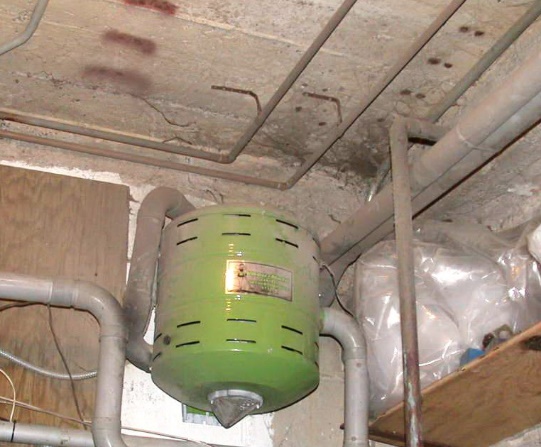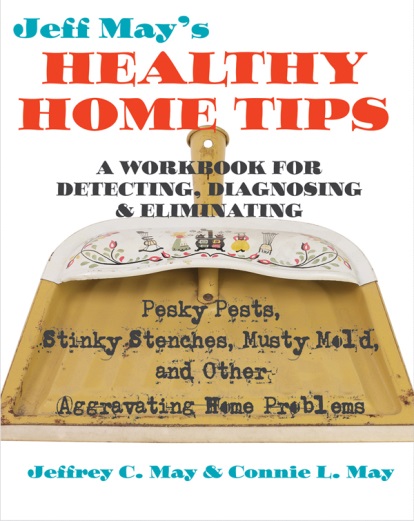Homeowner Newsletter: Winter 2019-2020
©2019 Jeffrey C. May
Well, the holidays are over, and many of us are listing some wishful New Year’s Resolutions, such as: “I’ll read more,” or “I’ll spend more time with my family,” or “I’ll save more money” (understandable after holiday expenses!).
Another resolution we might all consider is “I’ll lead a healthier life.” For some of us, that might mean losing weight (especially after all that holiday food!), or eating fresher foods, or quitting smoking. It could mean exercising more, or setting aside an hour or two each day for some private time, or getting more sleep. I’d like to suggest that you add “improving the air quality in my home” to that list.
It’s all well and good – and important, too – to commit to reducing outdoor pollution; but in modern life, people spend up to 90% of their time indoors. We work indoors and we usually exercise indoors. Our children spend time in school buildings, and then after school, they sit at home in front of computer screens.
You don’t have the same amount of control over spaces where your children go to school or where you work, but you can take steps to improve the quality of the air where you live. Here are some suggestions:
BASEMENT AND CRAWL SPACE
- If your basement or crawl space smells musty, arrange to have the space inspected by an indoor air quality professional. Air in a building naturally flows from bottom to top and out, so much of the air you breathe rises up from your basement or crawl space. If there is mold growth in your below-grade (below ground level) space, mold spores may be in the air that you breathe in your kitchen, bedroom, and in other rooms in your house.


- If you have a finished basement, it is important to keep it consistently heated in the winter – whether you are using the space or not. When air cools, its relative humidity (RH) rises. Some species of mold – including highly friable and potentially allergenic Aspergillus species – can flourish when the RH is over 80%. Basements are naturally cool and damp, and therefore prone to developing mold-growth problems when the RH is not adequately controlled. Measure the RH with a thermo-hygrometer, and keep the RH at or below 60%.

- Avoid exercising below-grade. When you exercise, your respiration increases, and so the dangers of exposure to basement mold spores through inhalation increases. If you can, move your exercise equipment upstairs.
CLEANING UP AFTER THE HOLIDAYS
- Clean your holiday decorations before packing them up for another year. Store them in plastic bins with tightly fitting lids. If you store them in the basement or a cold garage or shed, keep the bins up off the floor and away from cool walls; rolling metal shelves are best.
- If you have a hot-air heating system, check the boots under floor registers and HEPA vacuum as needed.
I’ve found food bits and even toys in boots.
- Avoid using fragranced cleaning products. They may smell great, but fragrances are chemicals. Why add chemicals to the indoor air, especially in a season during which you aren’t going to be opening windows a lot to air out your house?
- Use a HEPA-filtered vacuum cleaner, and one with a bag. If you use a bagless vacuum, empty the canister outdoors, because if you empty the canister indoors, some of that stored dust escapes into the air and re-settles back on the surfaces that you just vacuumed or dusted. If you have allergies or asthma, wear a NIOSH N95, two-strap mask.
- If you have a central vacuum system, be sure that it isn’t leaky, and that it exhausts to the exterior and not into your basement or garage.

EQUIPMENT
- You may operate a portable humidifier in your bedroom during the heating season. That may make your skin feel better, but many portable humidifiers can get moldy. Use only a warm-mist kind, which boils the water and therefore does not fall victim to biological growth. Do not allow the RH in your home to rise above 40%; if you see condensation on windows, the RH is too high.
- If you have central humidification (a humidifying system attached to a hot-air furnace), be sure it’s a trickle-type or steam humidifier. Other types of central humidifiers – such as those with evaporative pads – become moldy. Then byproducts of that mold growth find their way into the air stream that you breathe.

- If you live in a fairly modern, tight home and have an air-to-air heat exchanger to introduce fresh air into the house, be sure that the device is clean inside and has adequate filtration. I’ve seen a lot of air-to-air heat exchangers that were full of dust, dead bugs and mold. The air that people who lived in those houses were breathing was passing over those contaminated surfaces! Every few months, inspect your air-to-air heat exchanger and clean as needed.
WARMING UP THE HOUSE
- If you have a gas fireplace that does not vent to the exterior, install a carbon monoxide detector nearby. You don’t want to replace the words “cozy and warm” with the words “potentially life-threatening.” In my opinion, all gas fireplaces should vent to the exterior.
- If you have a wood fireplace or wood-burning stove or furnace, don’t store a lot of wood indoors, and sweep up wood chips and scraps that you spill when carrying the wood around. Such wood bits can be moldy.
- You may be tempted to turn down your heat in certain rooms to save money and energy, but resist the urge. As mentioned earlier in this article, as air cools, its RH rises. The savings you get from lower heat bills can be quickly eaten up by the costs of mold remediation in cool corners of under-heated rooms. Keep the thermostat at a minimum of 60°F.
Start the New Year off right, and work to improve the quality of indoor air in your own home. In so doing, you will help guard your own health and the health of those you love.

Refer to our book Jeff May’s Healthy Home Tips for practical advice on indoor air quality; available on amazon.com.
Edition 2 of our book My House is Killing Me will be published this coming fall.
Happy New Year!
To our readership: Jeff is now sending his newsletters to over 1,000 people, and so it has become cumbersome for us to do that directly from our office. We are therefore now working with MailChimp to get our newsletters to you. This is a secure service that promises to protect the privacy of your e-mail addresses.
If you do not wish to receive the newsletters, you can unsubscribe directly through this service. If you would like to send a comment to Jeff about any particular newsletters, his email address is jeff@mayindoorair.com.
Thank you in advance for your patience with any bumps we encounter as we make this transition.
